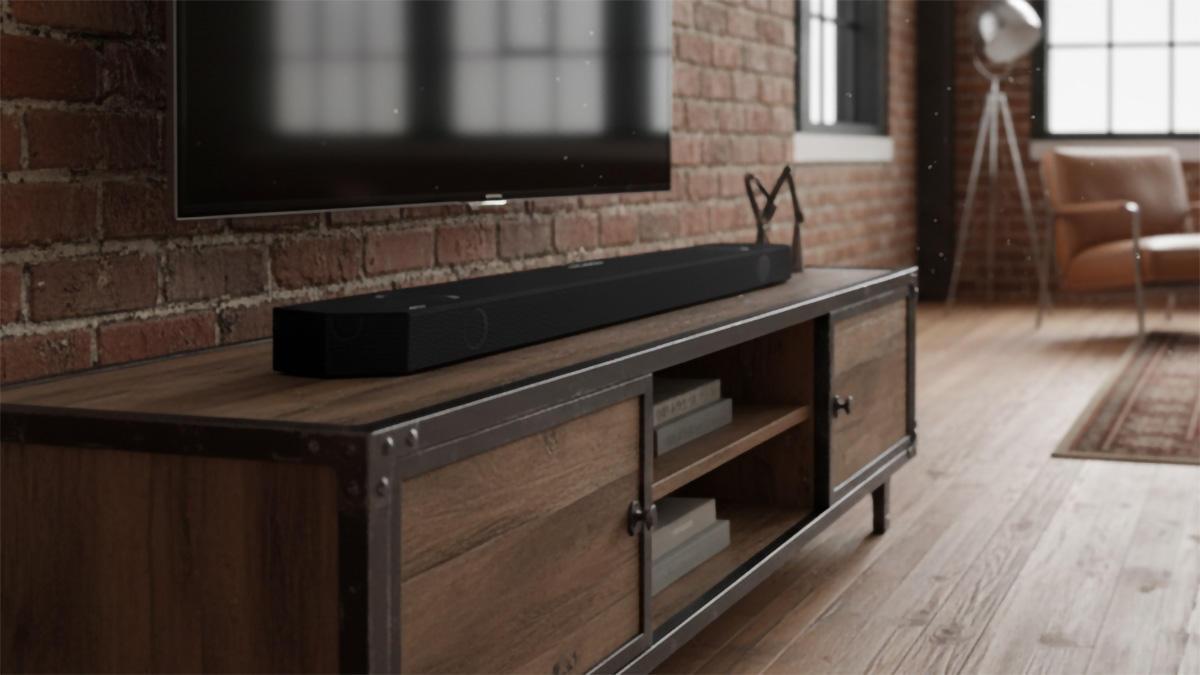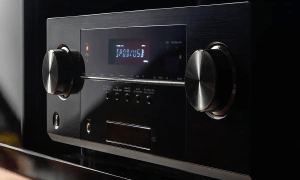A soundbar will work with nearly every modern TV, and most older sets too. The connection you choose affects sound quality, features, and how painless daily use feels. Here is a clear, people first guide that explains your options, what works with what, and the easy settings that stop the usual headaches before they start.
How soundbars connect to TVs
HDMI ARC or eARC
Most newer TVs have an HDMI input labeled ARC or eARC. ARC stands for Audio Return Channel. It lets one HDMI cable carry sound from the TV to the soundbar, and your TV remote can still control volume through HDMI control. eARC is the newer version with more bandwidth. It can pass lossless formats like Dolby TrueHD with Atmos, while regular ARC carries compressed formats like Dolby Digital Plus with Atmos from streaming apps. In plain terms, ARC is fine for streaming Atmos, eARC is required for lossless disc and console Atmos if audio goes through the TV first.
Optical digital
An optical cable works on almost any flat panel made in the last fifteen years. It is reliable and simple. There is a real limit though. Optical does not carry Atmos and will not pass lossless audio. If you only need stereo or Dolby Digital, optical is fine. If you want Atmos, use HDMI ARC or eARC.
Analog or Bluetooth
A few compact bars accept analog audio from a headphone jack. That is a last resort for older sets. Bluetooth is handy for music from your phone, not ideal for TV audio because of delay and format limits. Use HDMI or optical for TV, save Bluetooth for casual playlists.
RELATED: Soundbars vs. AV Receivers, Which is Better
What about the formats on your TV apps
Streaming apps such as Netflix and Disney Plus can send Atmos in a compressed form over ARC. Lossless Atmos from a Blu ray or a high bit rate local file needs eARC if you are routing audio from the TV back down to the soundbar. Those are the simple rules of the road.
Brand quirks to know before you buy
Some TVs do not decode DTS internally. Many Samsung sets in recent model years drop DTS support, so a movie file with only a DTS track may be silent when played by the TV app. You can solve this by using a streaming box or disc player that outputs Dolby, or by plugging the player into an HDMI input on the soundbar if the bar includes one. The broader point is simple. If you rely on TV apps, pick a soundbar and a TV that support the formats you actually use.
Remote control sanity
Turn on HDMI CEC so a single remote controls power and volume. Brands hide it under different names. Samsung calls it Anynet Plus, Sony calls it Bravia Sync, LG uses Simplink, Roku TV lists it as CEC. Enable ARC or eARC in the same menu, then set TV speakers to external. These two steps remove most day to day annoyances like double volume bars and no sound after an input change.
Four common hookup paths
Newest TV with eARC and a modern Atmos bar
Use a quality HDMI cable from the TV eARC port to the soundbar HDMI ARC or eARC port. Leave your streaming devices on the TV. You will get Atmos from TV apps, and lossless formats with eARC where supported. Good matches include Sonos Arc, Samsung HW Q800D, and Sony HT A5000.
TV with ARC only, you still want Atmos from streaming apps
Use HDMI ARC. You will get Dolby Digital Plus with Atmos from many TV apps, and volume will sync nicely. Do not expect lossless tracks through the TV with ARC only, that is normal.
Older TV without ARC, but it has optical
Connect the optical cable from TV to bar. Set the TV audio output to PCM or Dolby Digital. You will not get Atmos over optical, yet you will still get a large jump in clarity compared with TV speakers.
Very old TV or a bedroom set, you also want streaming
Consider an all in one bar like the Roku Streambar that adds its own streaming platform. It works with HDMI ARC, and can use optical on older sets. It is a tidy way to upgrade sound and apps at once.
What about passthrough and gaming features
Some soundbars include HDMI inputs so a console or disc player can plug into the bar and then pass video to the TV. Check the spec. Many midrange bars pass 4K at 60 hertz with HDR, while only a few support the full 4K at 120 hertz feature set for recent consoles. If you own a PlayStation 5 or an Xbox Series X and care about 120 hertz, run the console directly to the TV for video, then return audio to the bar through ARC or eARC. That keeps both performance and convenience.
Soundbar picks by room and use

Small rooms and apartments
Sonos Beam Gen 2, Bose Smart Soundbar 600, Yamaha SR C30A. These are compact, easy to place, and support HDMI ARC. Beam and Bose handle Atmos from streaming apps when the TV can deliver it. Yamaha is a clean stereo option with virtual surround and simple setup.
Mid rooms where you want a strong step up
Samsung HW Q800D, Sony HT A5000, Polk Signa S4. The Samsung adds wireless surrounds later, and pairs nicely with many Samsung TVs. The Sony integrates with optional wireless rears and a matching sub. Polk is a value option that supports Atmos over ARC for TV apps.
Large rooms and open spaces
Sonos Arc, Sony HT A7000, Samsung HW Q990 series. These bars scale with optional subs and surrounds, offer robust processing, and expect an HDMI ARC or eARC TV. Sonos and Samsung have strong multiroom ecosystems if you plan whole home audio.
Six quick tips that solve most problems
- Update firmware on both TV and soundbar before you test anything. Many format and lip sync fixes arrive in updates.
- Turn on CEC and ARC or eARC, then disable the TV speakers so the set does not mix its speakers with the bar.
- Set the TV audio output to Auto or Passthrough if you want bitstream to the bar. If voices sound thin, try PCM for stereo content.
- If you get silence with a DTS only file on a Samsung TV, use a player that can convert to Dolby Digital, or plug the player into the soundbar HDMI input if available.
- Use the apps on the TV when you rely on ARC, since a direct app on the TV can send Atmos over Dolby Digital Plus. If you want lossless disc Atmos through the TV, make sure the TV has eARC and the bar supports it.
- For gamers who want 4K at 120 hertz, connect the console to the TV for video, and send audio back to the soundbar through ARC or eARC to keep latency and features intact.
FAQ
Will any soundbar work with my TV
Yes in the sense that you can nearly always get audio with HDMI ARC, eARC, optical, or as a last resort analog. The experience and formats depend on the connection and on the TV features.
Can I get Atmos if my TV only has ARC
Yes for streaming apps that use Dolby Digital Plus with Atmos. No for lossless TrueHD Atmos from a disc, because that needs eARC when the audio moves through the TV.
Does optical carry Atmos
No. Optical tops out at Dolby Digital and DTS. Use HDMI ARC or eARC for Atmos.
Why do I get no sound with some files on a Samsung TV
Many Samsung TVs do not decode DTS. Use a player that can convert to Dolby Digital, or route the player to the soundbar if it has an HDMI input.
Is the wireless Atmos feature on some Samsung bars really wireless
It sends Atmos from certain Samsung TVs to the bar without a physical HDMI cable. It requires specific model pairings. If you mix brands, plan on the usual HDMI connection.
Bottom line
A soundbar will work with almost any TV, as long as you match the connection to your needs and turn on the right settings. Use HDMI ARC or eARC whenever you can, fall back to optical if needed, and save Bluetooth for music from your phone. Check whether your TV supports the formats you care about, especially if you want Atmos or you own files with DTS audio. Pick a bar sized to your room, update firmware, enable CEC, and set audio output correctly. Do that, and your TV will sound clearer, louder, and more engaging from day one.
Teksignal.com participates in the Amazon Services LLC Associates Program, an affiliate advertising program designed to provide a means for sites to earn advertising fees by advertising and linking to Amazon.com



























